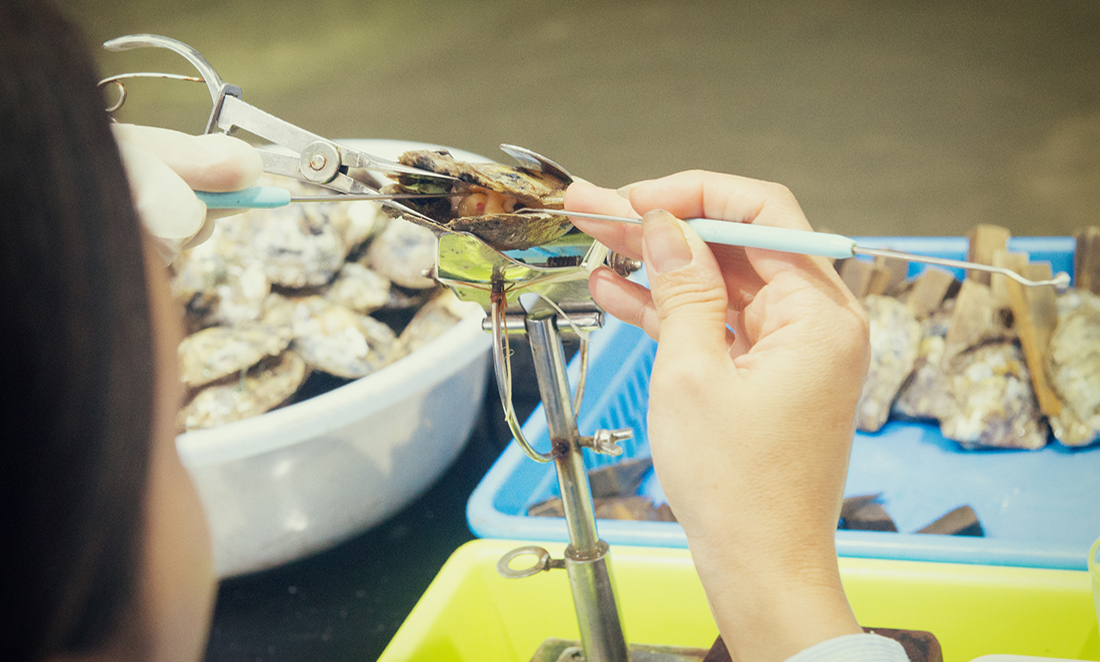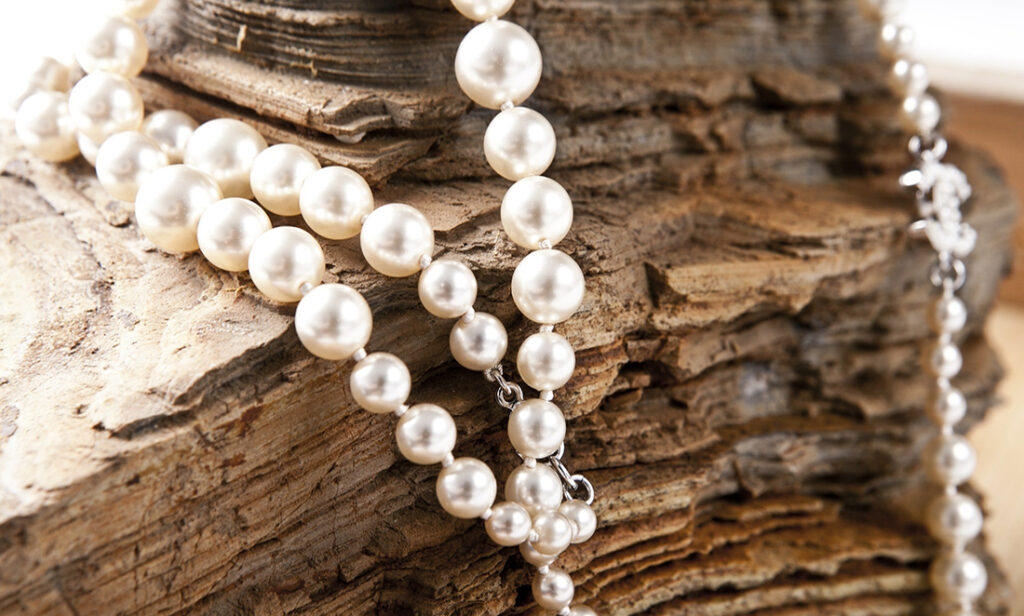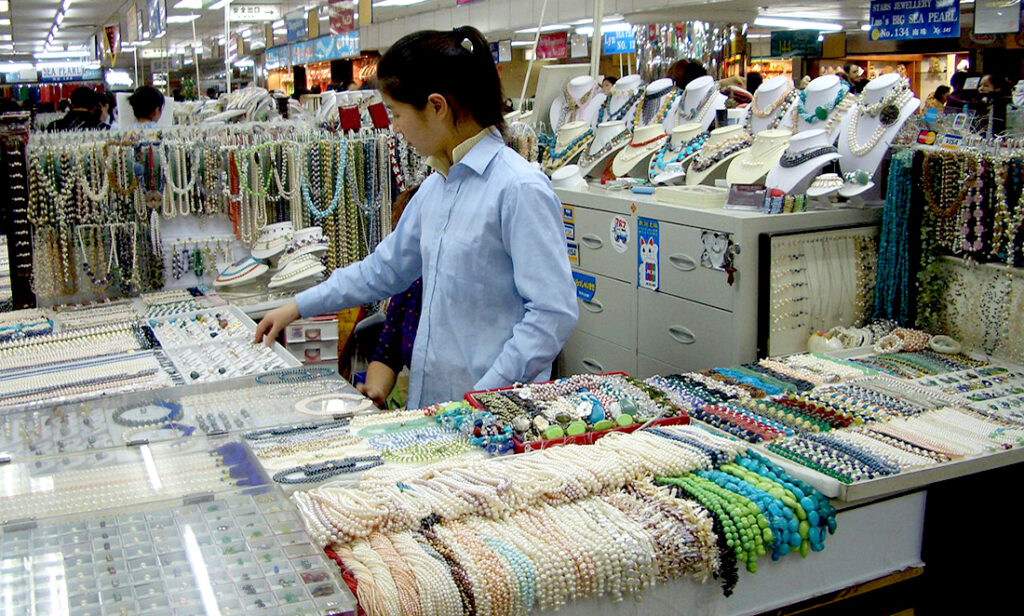Pearls. Humans have prized them for so long that the very word itself has come to mean something of value.
Some individual pearls are worth millions—the jewellery they’re worked into even more. In 2000, the average annual value of West Australian pearls was around $220 million.
But at any Asian pearl market worth its salt, you’re able to find a string of pearls for just a few dollars.
So what makes one hard white lump from the sea that much more special than another? And how have humans managed to hack the pearl-making process? Dr Marie-Lise Schlӓppy, currently working at the Australian Institute of Marine Sciences and the UWA Oceans Institute, explains.
WHAT MAKES A PEARL A GEM?
“Biologically speaking, every mollusc that has a hinged shell (a bivalve) can make a pearl,” Marie-Lise explains. That’s right, even your chilli mussels were once capable of popping one out.
That’s because pearls are made out of the same type of calcium material that bivalves make their shells out of.
“But not all pearls are beautiful, and not all pearls are valuable,” says Marie-Lise.
Some bivalves (in this case, several species of oyster) coat their pearls with a hard material called nacre. This coating gives the pearl its recognisable iridescence and value in the market place and is the same material that lines the bivalve’s inner shell.
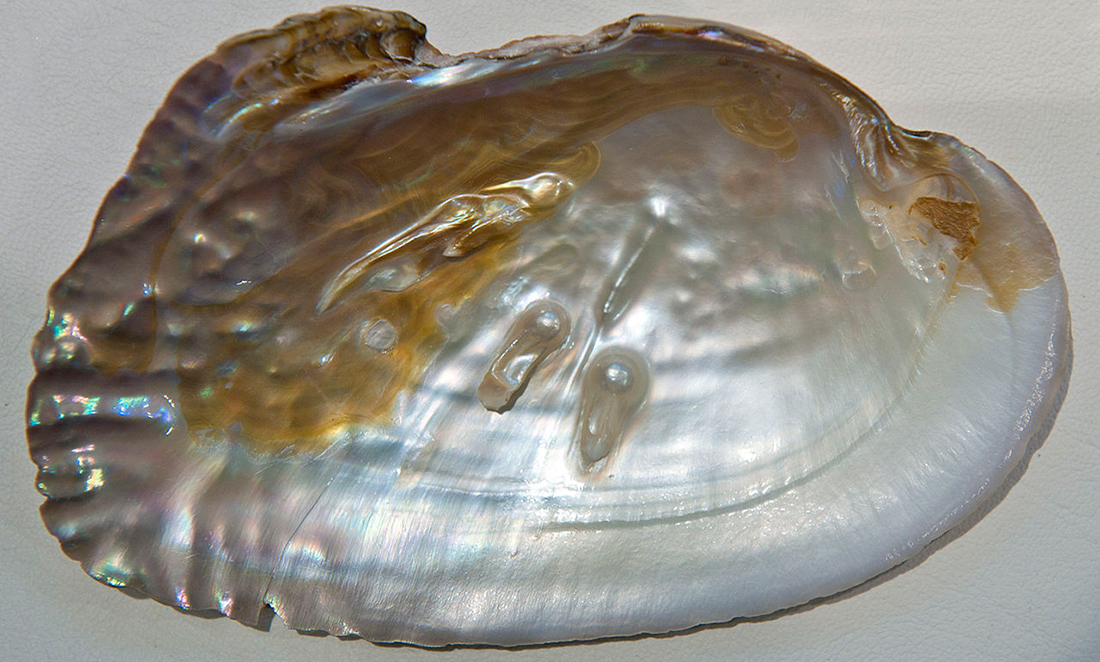
Of course, oysters don’t make this shiny stuff just for the sake of it.
AGAINST THE GRAIN (OF SAND)
Pearls are a product of a bivalve’s immune system—a response to something invading its shell and irritating its body.
The oyster will try to blow it out, like we do when a long strand of hair drops in front of our eyes. “If that doesn’t work, the oyster will start coating it with nacre. That’s where a natural pearl is born, in between the shell of the animal and the part that’s called the mantle.”
The mantle, the outer layer of the mollusc’s flesh, coats whatever is irritating it with calcium carbonate and nacre. Lighter and stronger than concrete, this pearl is the oyster’s attempt at protecting itself.
Old wives will tell you that it’s normally a grain of sand that begins this irritating, pearl-producing process. But we now know that’s not true.
“If you were to cut through the middle of a natural pearl—which you wouldn’t, because they’re quite expensive—you’d find organic matter there,” says Marie-Lise.
A pearl of value is made this way, naturally, in one in every 10,000 wild pearl oysters.
But humans, being the enterprising creatures that we are, have found a way to hack this biological process.
SIZING UP PEARLS
If natural pearls are grey wolves, cultured pearls are domestic dogs. And the first question any breeder must answer is do you want to breed a few majestic German shepherds? Or a lot of little Pomeranians?
“In the pearl industry, size matters,” says Marie-Lise.
For this reason, South Sea pearls are generally more valuable than the smaller Akoya pearls, which are farmed off the coast of Japan. Akoyas max out at about 12mm and have a nacre that is often artificially coloured. South Sea pearls can grow up to 20mm and have a highly lustrous nacre that naturally comes in hues of gold and silver.
You can get a good idea of the colour pearl an oyster will produce by peering inside at the layer of nacre that lines its shell.
It’s good news for the farmer if it’s a highly prized hue—but not such good news for the oyster.
SLICE OF LIFE
While natural pearls are the simple result of a lucky set of circumstances, cultivated pearls stem from a much more calculated, complex process.
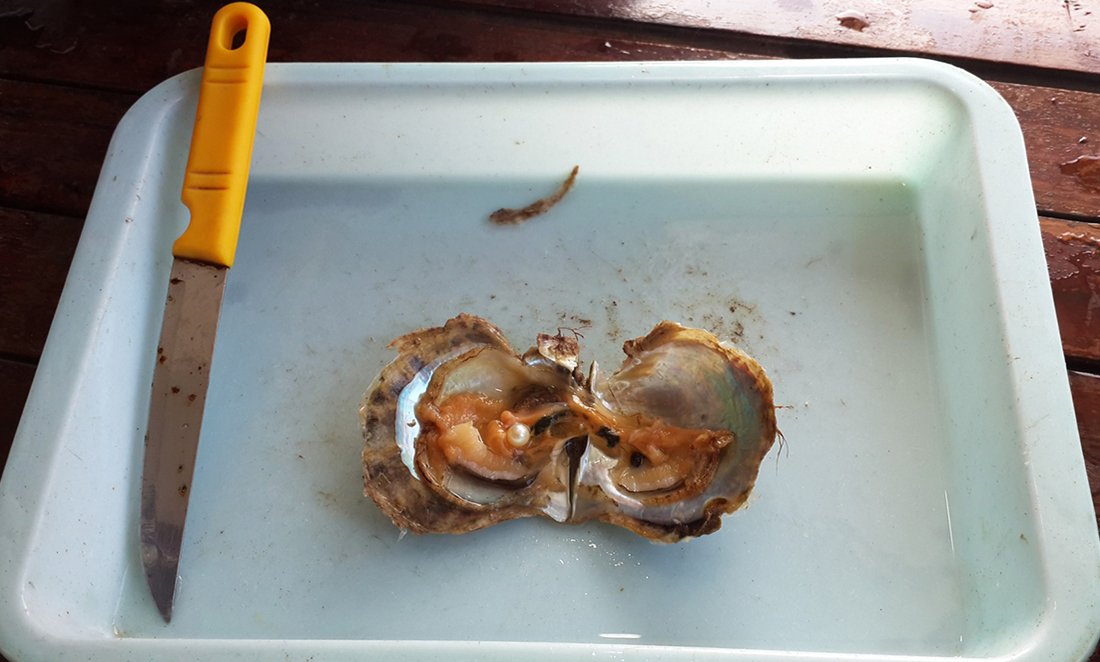
It begins by slicing off a piece of the oyster with the highly prized shell colour—the donor oyster.
A long strip of the oyster’s mantle that produces the nacre is cut off and diced up into lengths of about 40mm.
These slivers are placed around spherical beads made from the shell of mussels commonly found in the Great Lakes of America. This bead and mantle combo is placed in the gonad of another oyster—a surrogate mother.
Because it’s live tissue, the sliver of mantle from the sacrificed oyster grows onto itself within the gonad, encapsulating the bead and forming a pearl sac. And just as in nature, this mantle begins to lay down nacre.
UNPREDICTABLE PEARLS
In saltwater oysters, only one pearl per oyster is produced at a time. This makes them even more valuable but adds an element of risk to pearl cultivation.
Marie-Lise says that, by the time you’ve raised one oyster from a baby to an operable size, they’ve already cost approximately $12 each. And if you have 100,000 oysters on a farm, that adds up.
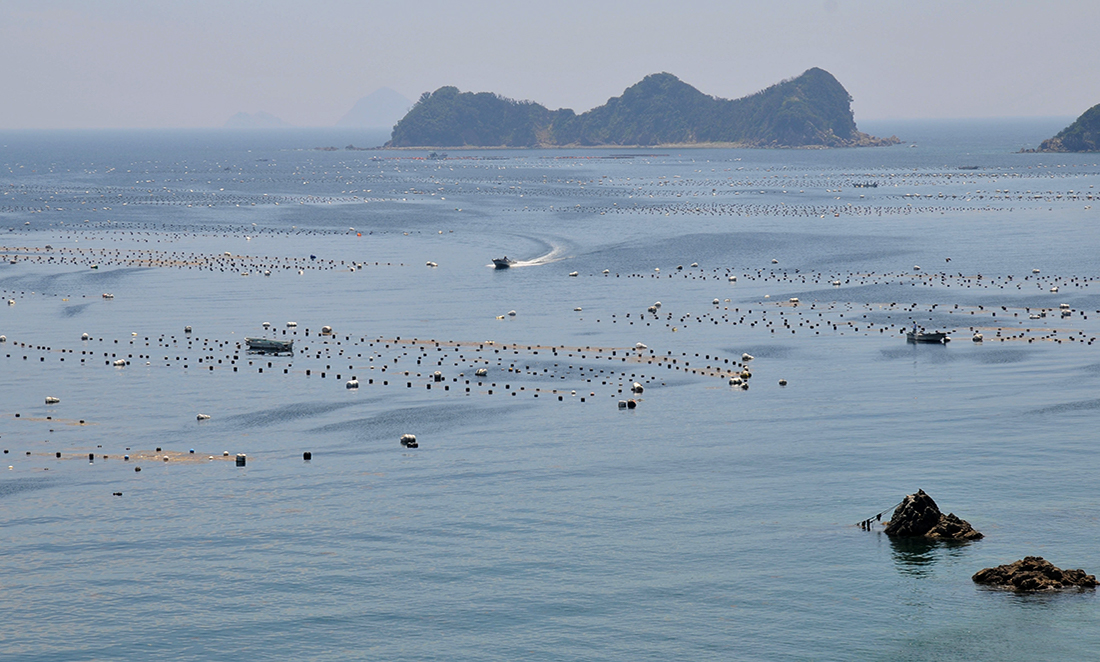
After implanting, the oysters are placed in pockets of mesh panels that are suspended from lines of rope in the sea. They’re left for about 18 months to grow their precious load.
They’re treated to frequent cleaning so they don’t have to share food with any organisms that might grow on their shells and to reduce the chance that any of these will do them damage. Crews are consistently employed just to keep their shells spotless.
But in spite of this vast investment in the oysters, at the end of the day, not all of them will produce perfect pearls. Some pearls will come out in funny shapes or with pocked and dull nacre, and we don’t really know why. While we’ve certainly unravelled some of the humble mollusc’s secrets, pearl farming can still be unpredictable.
Yet we persist.
Because if you really strike it lucky, then the world becomes your oyster.


